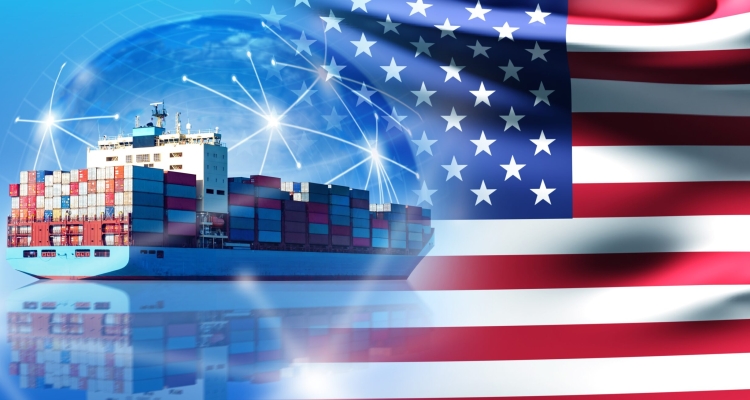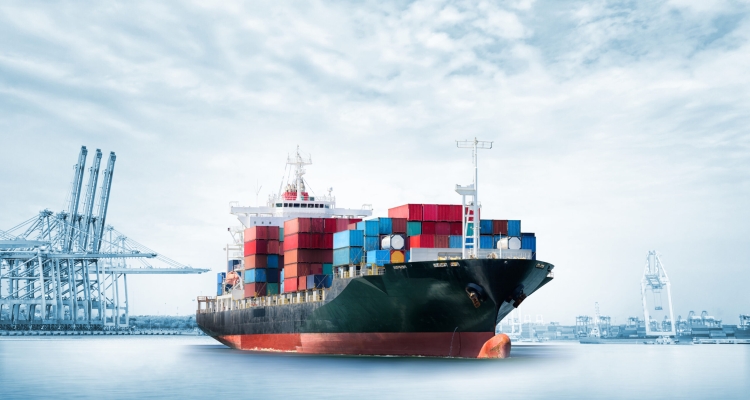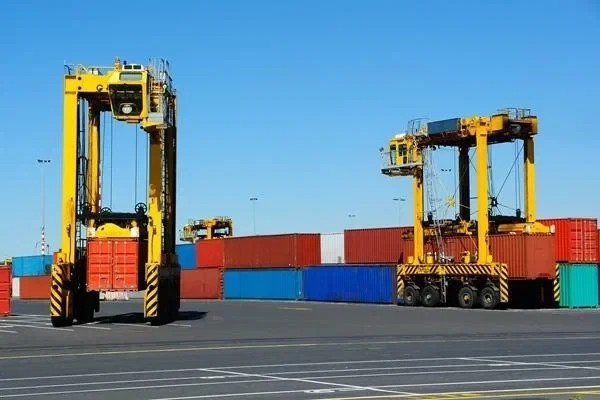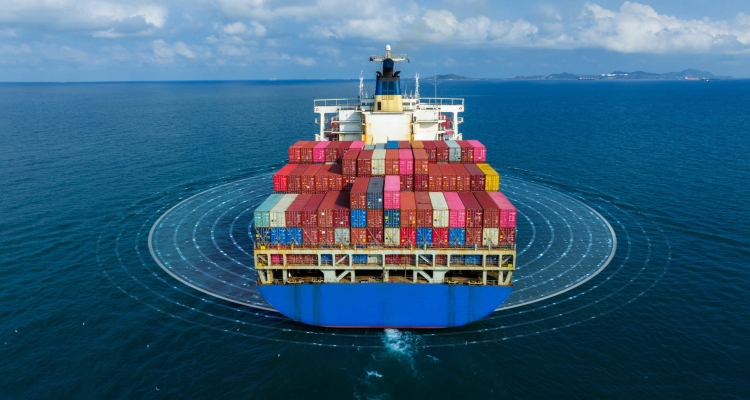Five trends that will reshape shipping in 2025
As 2025 approaches, the shipping industry will usher in a wave of change influenced by political, environmental and technological forces. These shifts will not only impact businesses, but also global supply chains and consumer markets. Also read: Shipping industry faces tough choices under new FuelEU maritime regulations Here are five key trends we predict will shape the shipping landscape in 2025… #1 The rise of America First means greater uncertainty The resurgence of America First policies promises to reshape the shipping and packaging industries in significant ways. The proposed tariffs of up to 20% on all imported goods and up to 60% on goods from China are aimed at boosting domestic production and reducing dependence on foreign suppliers. However, for businesses that rely on foreign suppliers, these tariffs will increase the complexity of cost management and logistics, as companies respond to these changes by importing in advance. The rush to comply with tariff deadlines can lead to bottlenecks at warehouses…
Xeneta predicts another difficult year for container shipping
Xeneta's Ocean Outlook 2025 report foreshadows a challenging year ahead for container shipping and warns that heightened geopolitical risks could disrupt global supply chains. “Red lights are flashing on the geopolitical dashboard and it would be foolish to ignore them,” Zenetta warned. Also read: US East Coast port strikes to cause major supply disruptions in 2025 If 2024 is marked by conflict in the Red Sea, similar threats may persist in 2025, with no signs of stability allowing container ships to safely return to the region. The detour around Africa has stretched TEU demand, and while new ships and slower TEU volume growth may help relieve some of the pressure, they won't be able to make up for another major disruption. Geopolitical concerns include the possibility of an escalation of conflict in the Taiwan Strait, potential unrest in Bangladesh and worsening tensions in the Middle East, particularly around the Persian Gulf. Key market trends in 2025 Xeneta noted that spot…
Truck driver shortage creates show logistics challenges »
Industry faces delays and rising costs as driver numbers shrink By Mark Hebert, Exhibition City News The trade show industry is dealing with logistical challenges due to a nationwide truck driver shortage. The shortage has impacted industries across the U.S., causing delays, increased costs and complicated logistics for companies transporting materials to and from the show site. The U.S. trucking industry was valued at $732.3 billion in 2020, but is struggling to meet growing demand. The truck driver shortage will reach 80,500 in 2022 and is expected to climb to 162,000 by 2030, creating serious obstacles for the trade show industry. Time is of the essence at trade shows, requiring precise scheduling to ensure materials arrive at the venue on time. There are many factors contributing to the driver shortage. The industry faces an aging workforce, high turnover and job demands that discourage younger drivers. Long working hours, time away from home and tight schedules make recruitment difficult. In addition,…
Global shipping faces turmoil: choke point disruption
The shipping industry is navigating dangerous waters, with critical shipping chokepoints facing unprecedented pressure, threatening global trade, food security and energy supplies. The United Nations Conference on Trade and Development (UNCTAD) "2024 Maritime Transport Review" pointed out that the stability of global supply chains is being undermined by geopolitical tensions, climate change and regional conflicts. Also read: Global shipping headaches – droughts and rocket fires Although maritime trade volume will grow by 2.4% in 2023, totaling 12.29 billion tons, the outlook for 2024 is fragile, with growth of only 2% expected. Disruptions at key chokepoints such as the Panama Canal, Suez Canal, Red Sea and Black Sea have led to higher shipping costs, longer transit times and strained logistics networks, putting recovery efforts at risk. Chokepoint disruptions and rising costs The Panama and Suez Canals, vital arteries for global trade, are under intense pressure. By mid-2024, traffic for both had dropped by more than 50%. The Panama Canal is facing…
Schedule and location of the 2025 Breakbulk Shipping show in the Middle East and Dubai
Middle East Bulk Transportation Expo in Dubai Accommodation Time: 2025.02.10-02.11 Accommodation Location: Dubai World Trade Center, United Arab Emirates Accommodation Location: Sheik Zayed Road Convention Gate Dubai United Arab Emirates - United Arab Emirates Exhibition Scale: Area of exhibition 26,000 square meters, 25,000 visitors, 429 exhibitors Unit: Breakbulk Events & Media The much-anticipated Dubai 2025 Middle East Bulk Transportation Show will be held at the Dubai World Trade Center in the United Arab Emirates from 2025.02.10 to 02.11 , providing a valuable communication platform for the logistics industry, enabling 25,000 participants to obtain information. in industry trends and explore the latest technologies. Middle East & Dubai Bulk Transportation Show Introduction: Breakbulk Middle East is the region's only event dedicated to the project transportation and breakbulk sectors. Government departments, private oil and gas companies and the world's largest environmental companies hold the keys to these lucrative contracts, and the fastest-growing event has become the place to meet these decision-makers.Middle East Breakbulk…
2024 Holiday Shipping Deadlines: Major USPS, FedEx, and UPS
With the holidays approaching, it's important to plan ahead to ensure your cards, gifts, and packages arrive on time. Here are the key 2024 USPS, FedEx and UPS shipping deadlines covering domestic, international and military destinations to help you get through Hanukkah, Christmas, Kwanzaa and other holidays. USPS 2024 Holiday Shipping Deadlines For packages destined for the continental United States, the following USPS dates are recommended for delivery before December 25th: USPS Ground Advantage: December 18Regular mail: December 18Priority Mail: December 19Priority Mail Express: December 21 For Alaska and Hawaii USPS Ground Advantage: December 16Regular mail: December 18Priority Mail: December 19Priority Mail Express: December 20 If you're shipping internationally or to a military address, check USPS's detailed holiday shipping guide at usps.com for specific deadlines. FedEx 2024 Holiday Shipping Deadlines For domestic U.S. shipments, FedEx offers several options to get your package delivered by December 24: FedEx Same day: December 24FedEx Overnight Service: December 23FedEx 2Day: December 20FedEx Express Saver:…
Improved Tips for Liquid Bulk and Bulk Shipping
Breakbulk shippers transport cargo or freight that typically does not fit into standard-sized containers or boxes. Instead, cargo is transported in bags, boxes, crates, drums, barrels or other handling equipment, or rolled, lifted or pushed onto ships or barges. These shippers’ cargo requires special equipment and handling, which means shippers need to overcome some unique challenges in supply chain operations. Also read: Breakbulk Bullying: The future is bright for heavy port investment Transportation challenges Bulk cargo is often oversized, heavy or irregularly shaped. This means breakbulk shippers must find the right vessel or carrier to accommodate these unique cargo characteristics, which can be challenging and time-consuming. Breakbulk shipments must be accompanied by numerous documents, including licenses, customs declarations, bills of lading, and compliance with various regulations and trade policies. Managing accurate, timely documentation across multiple jurisdictions and ensuring compliance with local laws can be complex and time-sensitive. Additionally, many ports and terminals are designed to handle only containerized cargo, so…
Nissan Rogue gasoline smell allegedly making occupants sick
The class-action lawsuit claims the Rogue SUV's positive crankcase ventilation (PCV) system is defective. September 24, 2024 — A Nissan Rogue class action lawsuit alleges that 2021-2023 Nissan Rogue models have odors inside the vehicle due to a defective positive crankcase ventilation (PCV) system. The Nissan class action lawsuit alleges that the Rogue SUV is equipped with a 1.5-liter 3-cylinder variable compression turbo (VC-Turbo) engine. Occupants claimed that the smell of gasoline made them sick when the fuel seeped into the rubber components. The Nissan Rogue owner further claimed that the dealer did nothing about the gasoline odor complaint, but the technician allegedly acknowledged that there was a problem. Supposedly, even the occupants' clothes smelled like the gas from their recent ride in the Rogue, and once the Nissan Rogue was shut down and parked, the smell was apparently quite horrific. The class action lawsuit also claims that the gasoline smell caused the Nissan Rogue's value to decrease. The class-action…
Impact of impending strike on US container shipping
September is traditionally one of the busiest months for containerized imports into the U.S. as companies prepare for the holiday rush, a boost to the peak shipping season. However, this year has presented an unprecedented combination of challenges that could severely impact supply chains. Potential strikes, natural disasters, and tariff uncertainty are converging to create a highly volatile environment for global trade. This is also causing retailers to place orders forward, resulting in ample inventory in the U.S. See also: U.S. freight volumes steady, container prices not plunging In August 2024, U.S. containerized cargo imports increased 12.9% year-on-year, with major ports handling nearly 2.5 million TEUs. While this reflects strong freight demand, it also heightens concerns about an impending labor strike on October 1. "The potential for a strike at ports on the U.S. East Coast and Gulf Coast adds uncertainty to container shipping professionals doing business in the United States," Christian Roeloffs, Co-founder and CEO of Container xChange. For…
Rising freight rates drive global container shipping profits soar
The global container shipping industry posted a sharp rise in profits in the second quarter, with revenues exceeding $10 billion, helped by record cargo volumes and rising freight rates. The growth came after disruptions to Red Sea shipping, a recent analysis showed. Also read: CH Robinson: How shippers can prepare for potential ILA strikes amid growing disruption in North American shipping landscape Net revenues at major container shipping companies, including Denmark's AP Moller-Maersk A/S and China's COSCO Shipping Holdings Co., nearly doubled compared with the first quarter of this year. These profits even exceeded the $8.88 billion in the same period of 2023, as highlighted in a report published on Saturday by industry expert John McCown. McCown expects profits to continue to rise this quarter given the strong performance of international trade. The container shipping industry, which transports 80% of the world's goods, experienced a boom during the pandemic due to strong consumer demand and supply chain disruptions. However, the…
U.S. shipping container imports fall to $999 million
US Shipping Container Imports After two years of growth, the supply of shipping containers from abroad fell by -8.6% to 598,000 units in 2023. However, imports grew significantly during the reporting period. The most significant growth rate occurred in 2021, when imports grew by 188%. Imports peaked at 655,000 units in 2022, before falling the following year. Also read: U.S. container imports surge in June 2024 as port labor stagnates In terms of value, shipping container imports fell sharply in 2023 to $999 million (IndexBox estimates). But overall, imports grew strongly. The fastest growth was in 2021, with an increase of 101%. Imports peaked at $1.5 billion in 2022, before shrinking sharply the following year. Import situation by country In 2023, China (314,000 units) becomes the largest supplier of shipping containers to the United States, accounting for 52% of total imports. In addition, the number of shipping containers imported from China is nine times that of the second largest supplier,…
The future of autonomous shipping: from coastal routes to
The concept of autonomous ships sailing along coastlines, inland waterways and even on the high seas is no longer confined to science fiction. During a recent CONNECTING PORTS talk show hosted by HPC Hamburg Port Consulting (HPC), experts came together to discuss the emerging reality of autonomous shipping and highlight how this technology is gradually becoming part of modern logistics. Also read: Eventual autonomous shipping faces huge hurdles The forum was moderated by Christina Prieser, Associate Partner at HPC, and featured insights from three industry leaders: Ørnulf Jan Rødseth, Managing Director of the Norwegian Forum for Autonomous Ships (NFAS), Marc Holstein, Head of the SEAFAR Remote Operations Centre in Antwerp, and Antoon van Collie, CEO of ZULU Associates. Rødseth shared Norway’s pioneering initiatives in semi-autonomous shipping, including the world’s first semi-autonomous container ship, which will begin transporting cargo in spring 2022. Operating with a minimal crew and controlled remotely, the vessel demonstrates the practical application of autonomous technology in coastal…
Shipping faces tough choices under new fuel regulations
Shipping companies are facing the challenge of meeting stringent carbon intensity reduction targets or face escalating penalties as the implementation of the FuelEU Maritime Regulation approaches. The regulation will come into force on January 1, 2025, imposing progressively stricter limits on the greenhouse gas (GHG) intensity of energy used by ships, with requirements becoming stricter every five years. Also read: Innovative strategy reduces cargo ship emissions by 17.3% The GHG intensity standard applies to all energy consumed during voyages and calls within the EU, and 50% of voyages into and out of the EU. To comply, shipping companies must pay a FuelEU fine or take steps to reduce their GHG intensity to meet regulatory limits. This can be achieved by using alternative fuels such as biofuels or LNG/LPG, or through pooling, where vessels that exceed their targets can offset those that underperform. However, Albrecht Grell, managing director of Hamburg-based maritime intelligence firm OceanScore, noted that many shipping lines, especially smaller…
Customized logistics for high-value unique needs
Shipping high-value and oversized vehicles such as racing cars, luxury cars and RVs (recreational vehicles) requires special attention to detail and a thorough understanding of international regulations. From professional handling and insurance to customs compliance and meticulous inspections, every step is critical. Also read: Choosing the right vehicle for your logistics needs: A comprehensive guide There are several ways to transport vehicles, including container shipping, roll-on/roll-off (RO-RO) vessels, and multipurpose vessels that can carry both containers and breakbulk cargo. With a RO-RO vessel, an RV, camper, or heavy vehicle such as a dump truck can be driven onto the transport vessel and secured. This method is generally more cost-effective, but offers less protection from bad weather. Ro-RO vessels are suitable for self-propelled cargo, such as oversized vehicles, trucks, and cars, which can be easily driven on and off the vessel using ramps. Containers are a safer option, offering effective protection from the elements and ensuring maximum protection for high-value vehicles,…
























